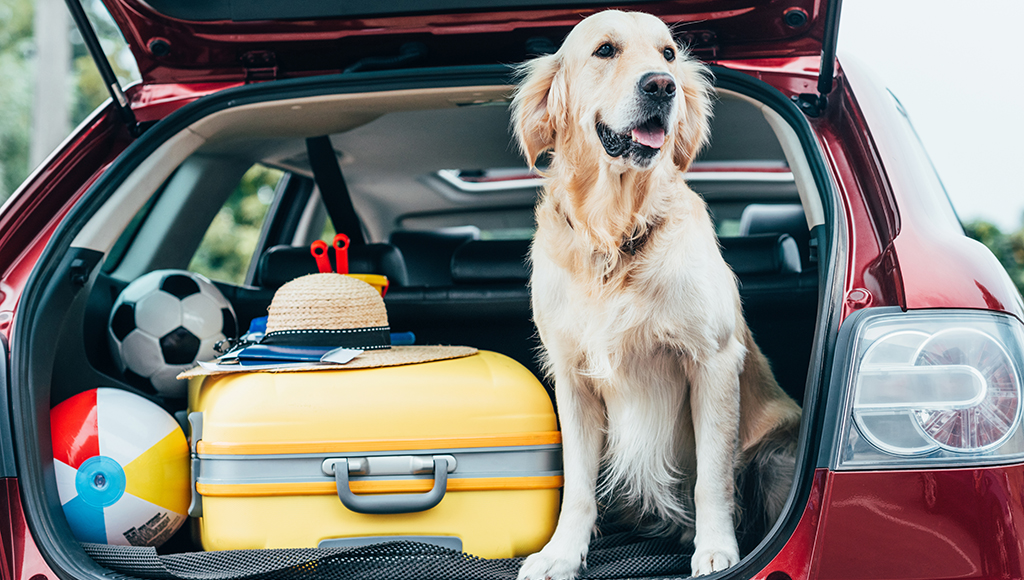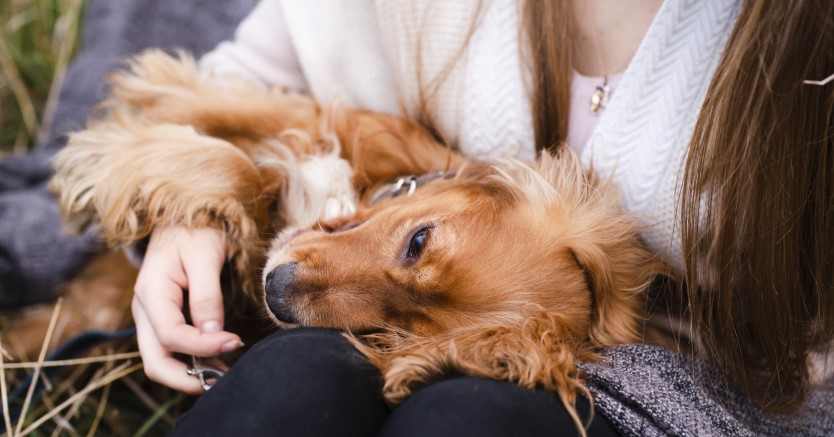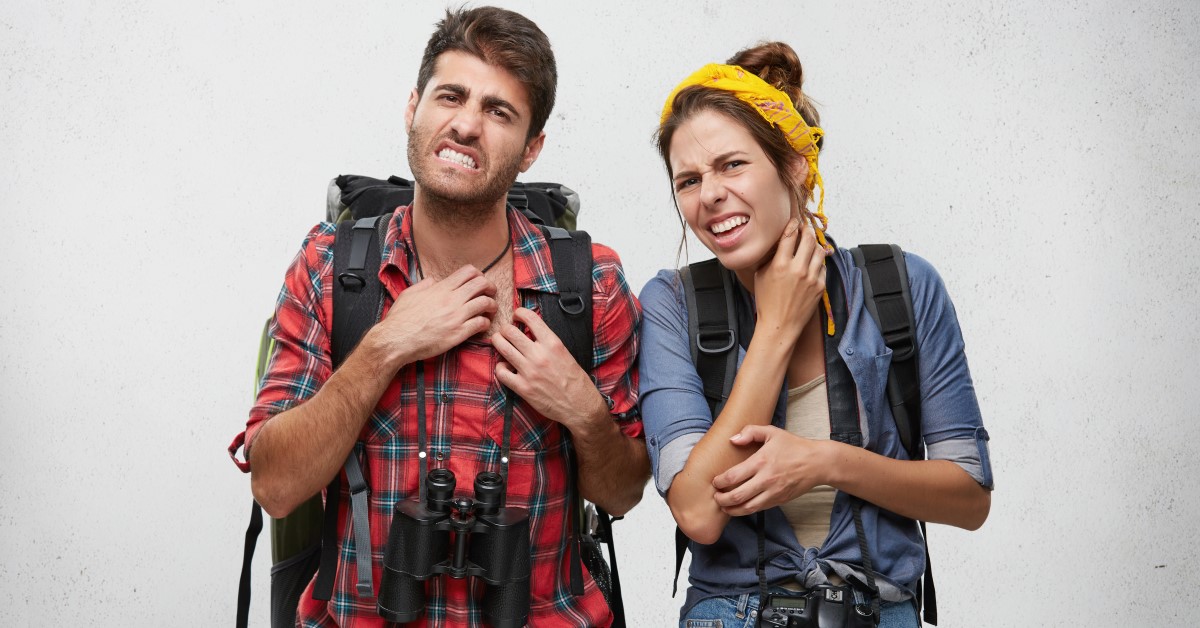Traveling with Your Pet
Good planning and preparation will make your trip easier

In spite of high fuel costs, traveling during the summer season continues to be a favorite activity for the family, and many people take their pets right along with them on their vacations and summer trips. If you're a pet owner planning a trip or vacation, the decision to take your pet along or leave him behind is an important one for both you and your companion. While it may be tempting to take your furry friend with you, keep in mind that some animals are not suited for travel because of temperament, illness, or physical impairment. If you have any doubts about whether it is appropriate for your pet to travel, talk to your veterinarian.
Planning and preparation are necessary when traveling with family pets. Consider whether your pet is comfortable when traveling; how your pet behaves when in the car on short trips around home is a helpful indicator if he'll be able to handle longer rides in the car. A car-sick animal can make a trip miserable for everyone. If you are taking a cat on a car trip, confine it to a cage or crate for periods of time prior to leaving to allow it to feel secure and to avoid having a pet under your feet while driving. Some ill or physically impaired dogs and cats cannot withstand the rigors of travel. If this is the case, discuss options such as using a reliable pet-sitter or a clean, well-managed boarding facility with your veterinarian.
A few general tips apply whether you travel by car or plane:
- Be sure your pet is properly identified with a current tag or a microchip.
- Have your pet properly and thoroughly groomed (bathing, combing, trimming nails) before your trip. Close quarters in a car for long periods and in the limited spaces of a hotel room will make you glad you did.
- Bring along your pets favorite food and familiar pet dish to help make your pet more comfortable.
- Before undertaking any trip, consult with your veterinarian to be sure that all required vaccinations are up-to-date and to receive a health certificate within ten days of travel. Remember to bring along proof of rabies vaccination, necessary when crossing state or international borders.
Car Travel:
- Consider whether your pet is comfortable when traveling; how your pet behaves when in the car on short trips around home is a helpful indicator if he'll be able to handle longer rides in the car. A car-sick animal can make a trip miserable for everyone. If you are taking a cat on a car trip, confine it to a cage or crate for periods of time prior to leaving to allow it to feel secure and to avoid having a pet under your feet while driving. Some ill or physically impaired dogs and cats cannot withstand the rigors of travel.
- Stick to your regular feeding routine and give the main meal at the end of the day or when you reach your destination. Feeding dry food will be more convenient, assuming your pet readily consumes it. Dispose of unused canned food unless it can be refrigerated.
- Take along a plastic jug of cold water in case other reliable water sources are not available. Give small portions of food and water and plan to stop every two hours for exercise and also so your pet can relieve itself. Remember to include a leash when packing your pet's traveling supplies.
- Pets should not be allowed to ride with their heads outside car windows. Particles of dirt can enter the eyes, ears and nose, causing injury or infection.
- If you must leave your pet in a parked car, be sure it is ONLY for a few minutes. Lock all doors, park in a shady area, and open windows wide enough to provide ventilation without enabling your pet to jump out or get its head caught. Be aware of weather conditions. You should not leave your pet in a parked car when the temperature and/or humidity are high or when temperatures are near or below freezing.
- When traveling by car, pack a simple pet first-aid kit that includes assorted bandages, antiseptic cream, an anti-diarrheal medication that is safe for pets (ask your veterinarian to suggest a product), gauze squares, and the phone numbers of your veterinarian, a national poison control hotline, and a 24-hour emergency veterinary hospital.
- In addition to a standard identification tag (which should be labeled with your name, home address and phone number), your pet's collar should include a travel tag with information on where you are staying while away from home. Should your pet become lost, this will allow you to be contacted locally.
- Perform a daily "health check" on your pet when away from home. In unfamiliar surroundings, your pet's appetite, energy, and disposition may change. Watch for unusual discharges from the nose and eyes, excessive scratching or biting of any body part, unusual lumps, limping, loss of appetite, abnormal elimination, or excessive water consumption. Visit a local veterinarian if you are concerned about any physical or behavioral changes.
- A car trip or vacation with your pet will go much more smoothly if you have plenty of supplies on hand to keep it happy and occupied. Consider basic needs, such as food, water, and portable dishes for eating and drinking, and also fun items, such as treats and toys. First-aid items such as gauze, iodine, antibiotic ointment, and insect-sting swabs can be invaluable, as can a motion-sickness treatment such as the homeopathic formula Calm Stress. Other items you should include are a portable pet bed, leashes, disposable pooper-scoopers, grooming tools such as a brush and comb.
- Travel to country settings with your pet presents its own challenges. Skunks, raccoons, porcupines, snakes, and other wildlife can bite or otherwise injure your pet. Keep your pet within sight and on a leash. Be considerate of other campers. Be sure to ask your veterinarian about flea, tick and heartworm prevention before you leave.
Airplane Travel:
- Air travel is of most concern to pet owners. Federal regulations require that pets be at least 8 weeks old and weaned at least 5 days before flying. Generally, a health certificate (which is not more than 10 days old) must be available before pets will be permitted to board a plane. A valid rabies vaccination certificate will also be required.
- If you travel by plane know that each airline has certain requirements that must be met before your pet can be boarded. Make sure you call well enough in advance to allow yourself time to meet their requirements. Any special information regarding specific types of carriers required or restrictions is available from your ticketing agent.
- Call the airline well in advance and ask them about their requirements, which may be different from airline to airline. It is also a good idea to check with the Department of Agriculture for any requirements they may have.
- Try to book a nonstop, midweek flight and avoid plane changes if possible. During warm weather periods choose early morning or late evening flights. In colder months, choose midday flights.
- Traveling with your pet through the airlines can range in cost from $170 to $200 but it could be zero if you are able to carry your pet on board.
- Arrive at the airport early, exercise your pet, personally place it in its crate, and pick up the animal promptly upon arrival. Do not take leashed animals on escalators.
- Ask your veterinarian for specific feeding instructions. The age and size of your pet, time and distance of the flight, and your pet's regular dietary routine will be considered when feeding recommendations are made. For your pet's comfort, air travel on an almost empty stomach is usually recommended. It is a good idea to restrict your pet's food and water 4 hours before departure to minimize stomach discomfort and also to minimize your pet's urge to potty. You can give the main meal at the end of the day or after you reach your destination.
- Freeze the water so it will thaw by the time your pet is thirsty but won't splash out during loading or unloading.
- Take along a few of your pet’s favorite toys and something with your scent on it to help settle him down and give him comfort.
- Veterinarians recommend against tranquilizing your pets while traveling by air since the effects of tranquilizers on animals at high altitudes raises their risk of breathing and heart problems.
There are specific requirements regarding pet carriers/portable kennels. Please check the following:
- Kennel must be in good shape and approved for air travel. Defective kennels can lead to injury and escape, and may be rejected upon boarding.
- Kennel must be large enough to allow the animal to stand (without touching the top of the cage), turn around and lie down.
- Kennel must be strong and free of interior protrusions, and must have handles or grips.
- Kennel must have a leak proof bottom that is covered with plenty of absorbent material.
- Kennel must be appropriately and clearly labeled with your pet's name, complete home address, phone number and destination contact information, as well as the words "LIVE ANIMAL" with arrows indicating the crate's proper upright position.
- Kennel must be properly ventilated on opposite sides, with exterior rims and knobs so that airflow is not impeded.
If you determine it is best for your pet to accompany you, you will need to devote extra time to prepare for the journey. For example, you'll need to have all of the supplies necessary to keep your pet comfortable while he's away from home, and you'll need to familiarize yourself with any pet-related restrictions or requirements imposed by airlines, destination countries or states, hotels, etc. Here is a checklist for traveling with your pet that will help make the journey a safe and enjoyable one for both you and your furry friends:
- First of all if you decide that your pet should not travel, consider the alternatives: Have a responsible friend or relative look after your pet, board your animal at a kennel, or hire a pet sitter.
- If a friend or relative is going to take care of your pet, ask if that person can take your animal into his or her home. Animals can get lonely when left alone. Be sure that your pet is comfortable with the temporary caretaker and his or her home, not to mention any pets that the pet sitter may have.
- If you choose to board your pet, get references and inspect the kennel. Your veterinarian or local shelter can help you select a facility.
- If you are hiring a pet sitter, interview the candidates and check their references. (A pet sitter may be preferable if your pet is timid or elderly and needs the comfort of familiar surroundings during your absence.)
- Whatever option you choose, your pet should be up-to-date on all vaccinations and in sound health. If you arrange for someone to care for your pet while you are away, provide the caretaker with the telephone number where you can be reached, the name and telephone number of your veterinarian, and your pet's medical or dietary needs. You should also make sure that your pet is comfortable with the person you have chosen.
- If you will be staying with friends along the way, be considerate. Find out in advance if the pet is welcome. Not everyone loves pets, so be tolerant and respectful of those who don't.
- The same goes for hotels, motels, parks, and campgrounds. Always check whether pets are allowed or kennel facilities are available. If the pet must be left alone in a hotel room, place a "Do Not Disturb" sign on the door and inform the maid and the front desk. Consider bringing along a portable kennel for use in hotel rooms or the homes of friends or relatives who are not comfortable with your pet loose when no one is home.
Planning ahead and being well-prepared will help make your trip with your pet fun and enjoyable!
Ready to start saving money on pet wellness care?
Then take a look at Mint Wellness, the pet wellness plan that provides fast reimbursement on routine pet care. Save on vaccinations, wellness exams, preventatives, dental, and more!
Learn More


